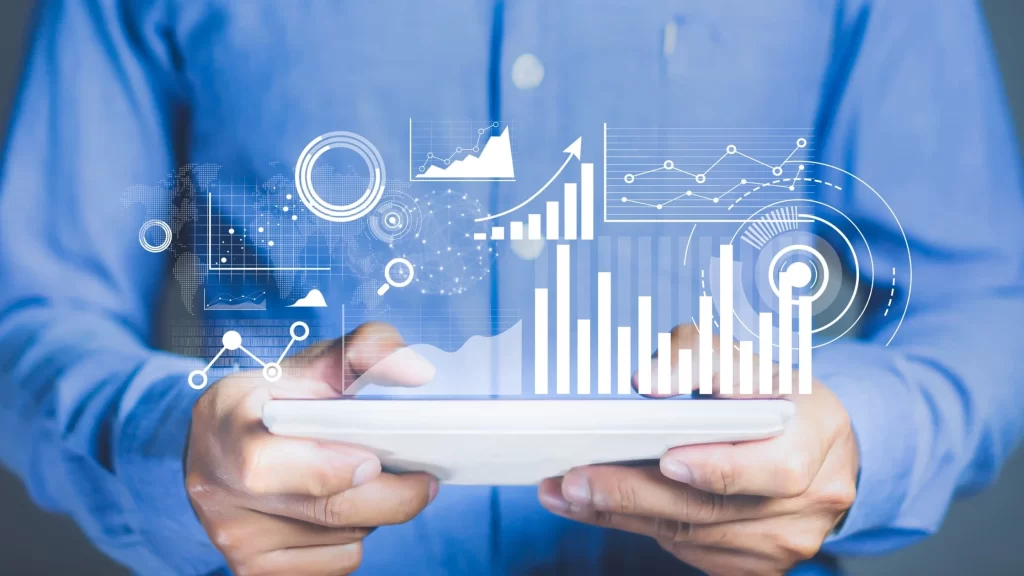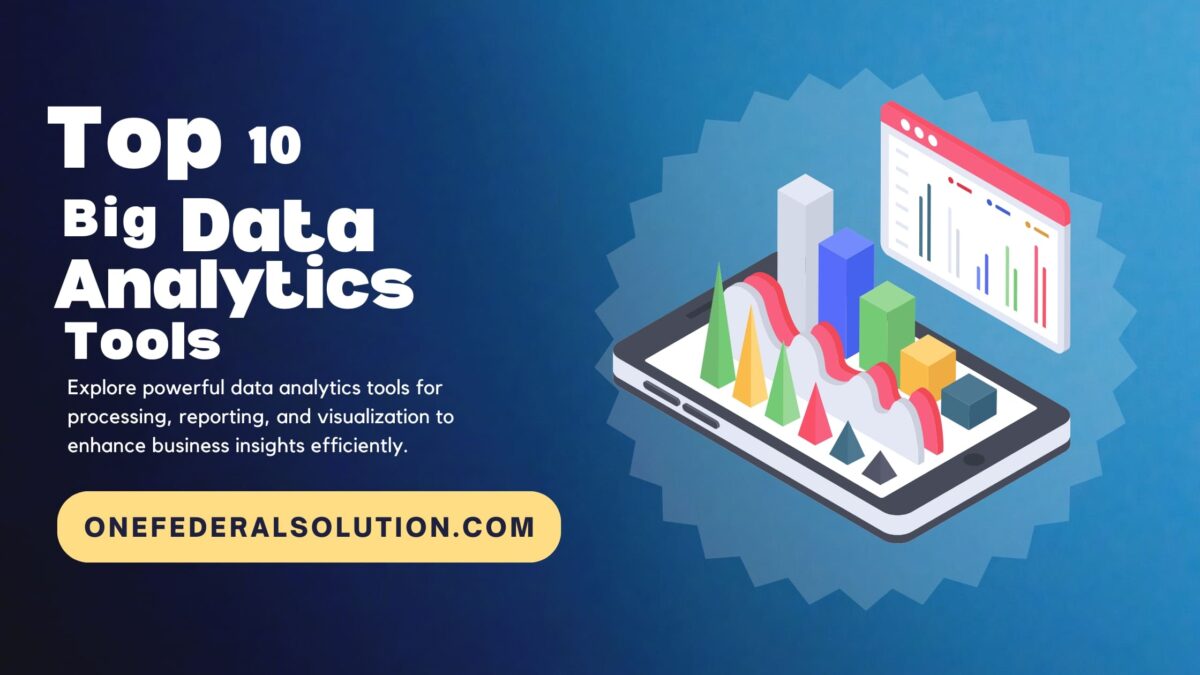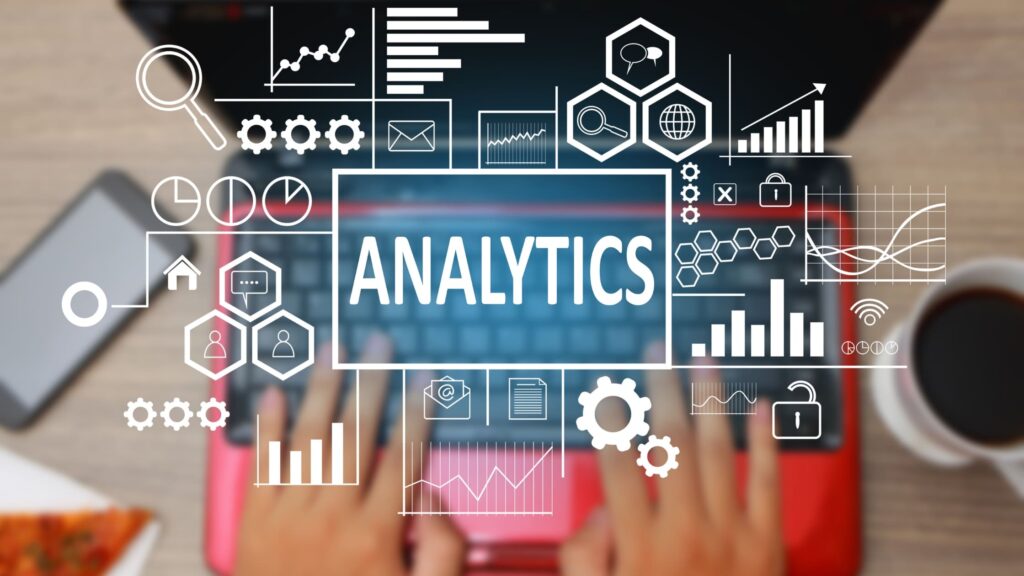It is safe to say that data is the lifeblood of modern organizations.
After all, businesses, irrespective of their size, type, and scope, increasingly rely on data to make informed decisions, understand customer behavior, and improve overall operations.
But it also comes with a concern.
The vast amount of data generated daily, also known as big data, is quite overwhelming to process manually. However, it is still important for organizations to extract important pieces of information from those huge piles of data.
Here comes AI or artificial intelligence. It enables businesses to efficiently analyze this data and extract insightful information.
AI-powered data analytics play an important role in helping businesses turn raw data into actionable, intelligence strategies. Let’s walk down how organizations are leveraging AI in data analytics and how it is impacting various industries.
Understanding AI and Big Data Analytics

Before we get into the practical uses, let’s understand what AI and big data analytics mean.
AI is a machine or software that mimics human intelligence, learning from data and getting better over time. Big data analytics examine large and complex data sets to find hidden patterns, trends, and associations.
Together AI and big data analytics allow businesses to process and analyze massive amounts of data way faster and more accurately than humans can. It’s changed industries by allowing organizations to get deeper insights, better customer experiences and make data-driven decisions.
Decision-Making with AI
One of the biggest ways organizations are benefiting from AI and big data analytics is in decision-making.
Businesses used to rely their decisions on basic data analysis, experience, and intuition. Organizations can make better, data-driven decisions with AI-driven analytics.
AI systems can analyze past data and identify patterns and trends that humans are unable to.
For example, retail businesses can use AI to study customer buying behavior, so they can forecast future trends and optimize inventory management. This means better stock levels, fewer stock outs, and more accurate product launches.
Customer Experience
Another area where AI and big data analytics are having a significant impact is customer experience.
Businesses can gain a better understanding of the requirements, tastes, and behavior of their customers by utilizing AI.
By analyzing large amounts of data from customer interactions including social media, surveys, and online reviews organizations can tailor their products, services, and marketing strategies to individual customer needs.
For instance, chatbots driven by AI can rapidly answer consumer questions, increasing response times and customer satisfaction.
AI can help businesses predict future behavior, personalize recommendations, and increase customer loyalty.
Simplify Operations and Reduce Costs
AI and big data analytics are also helping organizations simplify operations and reduce costs. AI can automate repetitive tasks so employees can focus on higher-value work. In manufacturing, for example, AI-powered systems can monitor production lines, detect faults, and even predict equipment failure before it happens, saving time and money on repairs.
In supply chain management, AI can analyze data from multiple sources to optimize logistics, predict demand, and ensure smooth operations.
This leads to efficient processes and cost savings which can have a big impact on a company’s bottom line.
Predictive Analytics and Risk Management

Predictive analytics is another application of AI in big data analytics.
AI can make highly accurate predictions by analyzing past data and identifying trends.
For instance, financial organizations evaluate credit risk, identify fraud, and forecast market trends using AI-driven predictive analytics.
Similarly in healthcare, AI can analyze patient data to predict disease outbreaks or assess the likelihood of certain medical conditions. It can help with early intervention and better management of healthcare resources.
This way, businesses can proactively address potential concerns, lower risks and identify opportunities.
AI in Marketing and Sales
AI can help marketers learn more about consumer behavior, market trends, and rival performance with big data analytics. It is worth mentioning that many AI tools can analyze consumer data to produce leads, segment customers, and develop focused marketing campaigns.
For example, they can divide up a customer base according to their browsing habits, past purchases, and degree of engagement. By sending tailored offers, they can raise conversion rates. AI techniques in sales can help identify which clients are most likely to make a purchase and find high-potential leads.
AI-driven content creation tools are already being used to automate marketing materials, blog posts, and social media content saving time and resources.
AI and Big Data in Healthcare
AI and big data analytics are assisting physicians and other healthcare workers in providing more precise diagnoses and individualized treatment regimens.
AI can find trends and forecast possible health hazards by analyzing enormous volumes of medical data, such as test results, patient records, and genetic information.
It can help identify early warning indicators of diseases like diabetes, cancer, and heart problems. Better patient outcomes and more effective therapy are the results of early detection.
AI-driven tools are helping healthcare providers streamline administrative tasks, reduce costs, and free up more time for patient care.
Challenges of AI in Data Analytics
There are several challenges even if the advantages of AI in data analytics are evident. Security and privacy of data are among the primary issues. Organizations must make sure they are adhering to data protection laws and safeguarding client information from breaches as AI systems handle enormous volumes of sensitive data.
The shortage of skilled AI pros presents another difficulty.
Implementing AI and big data analytics requires specialist knowledge and expertise. Organizations must invest in training and hiring data scientists and AI specialists to get the most out of these technologies.
The Future of AI in Data Analytics
In the future, the use of AI in big data analytics will only grow.
As more data becomes available and AI technologies improve, organizations will be able to get even more insights from their data. AI will be incorporated with edge computing and the Internet of Things (IoT) to facilitate real-time data analysis and create new prospects for sectors like smart cities, transportation, and agriculture.
AI is likely to get more affordable and accessible, letting small businesses harness its power to improve their operations.



